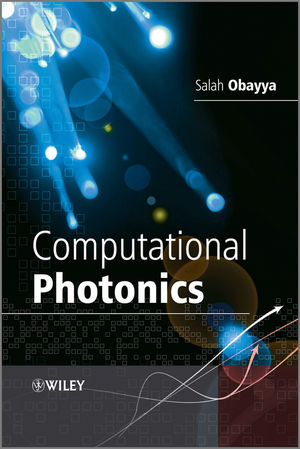Computational PhotonicsISBN: 978-0-470-68893-9
Hardcover
328 pages
November 2010
 |
||||||
1 Introduction
1.1 Photonics: the countless possibilities of light propagation
1.2 Modelling photonics
2 Full-vectorial Beam Propagation Method
2.1 Introduction
2.2 Overview of the beam propagation methods
2.3 Maxwell’s Equations
2.4 Magnetic field formulation of the wave equation
2.5 Electric field formulation of the wave equation
2.6 Perfectly-Matched Layer
2.7 Finite Element Analysis
2.8 Derivation of BPM Equations
2.9 Imaginary-Distance BPM: Mode Solver
3 Assessment of Full-Vectorial Beam Propagation Method
3.1 Introduction
3.2 Analysis of Rectangular waveguide
3.3 Photonic Crystal Fibre
3.4 Liquid Crystal Based Photonic Crystal Fibre
3.5 Electro-optical Modulators
3.6 Switches
4 Bidirectional Beam Propagation Method
4.1 Introduction
4.2 Optical Waveguide Discontinuity Problem
4.3 Finite element analysis of discontinuity problems
4.4 Derivation of Finite Element Matrices
4.5 Application of Taylor Crystal



